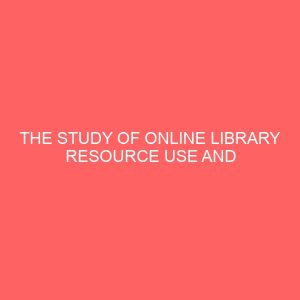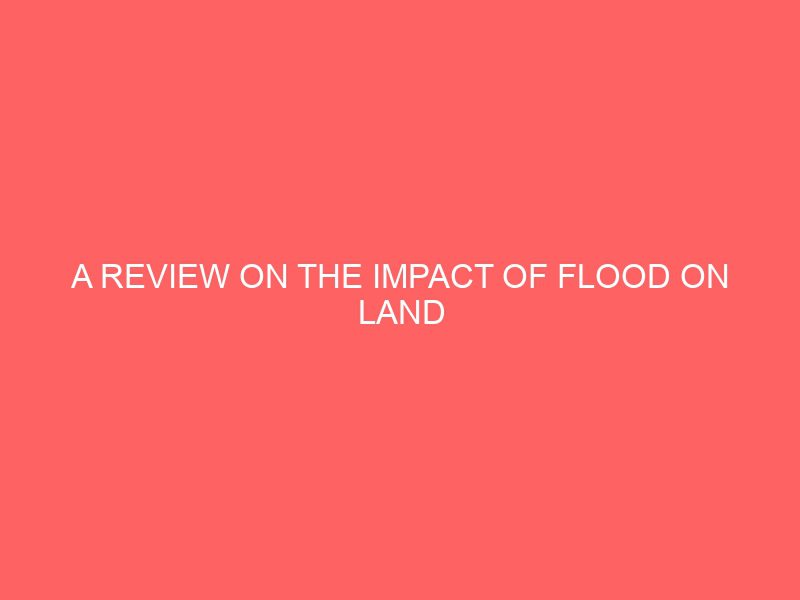Description
CHAPTER ONE INTRODUCTION 1.1 BACKGROUND OF THE STUDY Floods are the most frequent of the natural hazards globally (40%) followed by tropical hurricanes (20%), earthquakes (15%) and drought (15%) (Burton et al., 1978). In terms of global distribution, Miller (1997) observed that the majority of floods (44%) occur in Asia, 27% in America, 13% in Africa, 10% in Europe and 5% in Oceania. Natural disasters? associated annual economic losses increased from US$75 billion in the 1960s to US$659.9 billion in the 1990s without including indirect losses (Chen, 2007). At country level, among all the natural hazards in Nigeria, floods pose the greatest threat to the property, safety and economic well being of human communities (Brody et al., 2007). When quantifying flood loss, Nelson (2008) found out that, throughout the last century, flooding has been one of the most costly disasters in terms of both property damage and human casualties to the extent that the 1993 Mississippi River flood in Midwest killed 47 people with economic loss ranging between US$15 and US$20 billion. In Nigeria, more than 50% of all natural disasters are related to weather, climate and water (WMO, 2007). Natural changes as well as those brought on by development activities affect flood plains and there is need to understand and to identify appropriate development and natural resource management practices for these areas. Although development planners have the knowledge on how often, on the average, the flood plain will be covered by water, for how long, and at what time of the year, but lack of space for the expansion of urban settlement and the rapid rise in population even in rural areas has increased demand for land which has resulted in encroachment into the floodplains (Australian Government, 2008). Most urban and rural authorities do not have the necessary finances to put up the necessary flood mitigation measures in the flood plains or even plan the rural settlements properly so that they reduce losses associated with flooding events (Chen, 2007). Therefore delineating floodplains and other areas subject to flooding is a valuable input for proposing compatible development activities. Although flooding cannot be wholly prevented, its impacts can be reduced through appropriate planning and management. Damaging effects of flood disaster on lives and property can be reduced by structural (dams and weirs) and non-structural (legal instruments, public education, forecasting and early warning systems and rescue operations) measures. Despite the structural flood mitigation measures being in place, communities in the flood prone areas of Nigeria are still being adversely impacted on by the floods. Non-structural measures encourage living with floods and emphasis is on regulation of human activities through land use plans. There is therefore need to reduce the flood impacts on ecosystems and human settlements through flood hazard mapping. Geographical Information Systems (GIS) is one of the techniques that can be used in flood level forecasting and management in order to assist in the reduction of human and economic losses through the delineation of the areas at risk of being flooded. Institutions such as the World Bank (WB) and the recently developed Southern Africa Development Community (SADC) regional water policy are recommending land use plans which are a proactive flood mitigation measure. An assessment of the flooding event by the community coupled with GIS provides valuable input in policy formulation to reduce vulnerability and strengthen people?s capacity to cope with the disaster or risk they may be facing (Meijerink et al., 1994). The temporal and spatial pattern of floods is attributed to several factors of global change. The relentless land use/cover change (LUCC) can affect flood propagation (Di Baldassarre et al. 2009), flood volume, flood frequency, flood peak (Deasy et al), stream flow regime. It therefore poses challenges to the existing flood emergency and disaster management and planning efforts. Undoubtedly, an effective planning and implementation of flood disaster management and mitigation system requires and can benefit from a greater understanding of the effect of LUCC. However, determining the relationship between flood and LUCC is not an easy task. Detecting the effects of changing land use/cover on flood characteristics can be complicated by collection and interpretation of LUCC over a sufficiently long time period, selection and implementation of a suitable flood analytical tool at basin level and the linkage between the above two. Recent development of 2D hydraulic modeling at large scale basins. Grunfest (1995) argues that due to high poverty levels, people have become more vulnerable because they live in hazardous areas including flood plains and steep hills. They have fewer resources which makes them more susceptible to disasters .They are less likely to receive timely warnings. Furthermore, even if warnings were issued, they have fewer options for reducing losses in a timely manner. The poverty level affects the resilience and process of recovery from disasters. Disaster mitigation, preparedness and prevention needs to address socio-economic issues not only geological and meteorological aspects. 1.2. STATEMENT OF THE PROBLEM The problem which this study addressed is the impact of floods on the utilization of land in Ibadan, Oyo state. The study area is in a low-lying, severely flood prone area (wetlands). Most of the communities targeted in the area are located along the Apete Bridge, Ibadan which. The population along the areas of the bridge which causes flood during heavy rainfall has grown over the years. More than 8,000 people live in this area. The area has suffered floods for a consecutive rainfall seasons The floods caused displacement of people from their usual dwelling places resulting into varying impacts on infrastructure, environment as well as damage to property causing huge traffic amidst the car passengers in the area. 1.3 AIMS AND OBJECTIVES 1. To examine the environmental effect of flood in the Ibadan areas of Oyo state, its challenges and management. 2 By examining the dimension and causes of flooding in the metropolis 3. Examining the role of city authorities in the management of flood. 4. To have an under spot assessment of flood prone zones in the cities with a view of suggesting ways of tackling them. 5. To assess the effects flood has on the utilization of land in the areas of the case study. 1.4 RESEARCH QUESTIONS The following questions were posed in line with the objectives of the study 1. What are the causes of flooding in the metropolis? 2. What are the environmental effects of flood in the Ibadan areas of Oyo state? 3. What are the roles of city authorities in the management of flood? 4. Does flood has any effect on the utilization of land in the areas of the study? 5. What are the ways of managing flood in the study? 1.5 SIGNIFICANCE OF THE STUDY The study is important because it assesses and estimates the effects of the floods on the utilization of land. The study also endeavors to establish the underlying causes of flood in Ibadan community. More importantly, it is envisaged that the outputs of the study will be key inputs in the designing of sustainable mitigation measures to minimize the impact of floods and the associated risks. 1.6 SCOPE AND LIMITATION OF THE STUDY The study is limited to areas in the Ibadan community, Oyo State. It is chosen as the area in carrying out the research in this project and all research done within the study are limited to the aforementioned area. Due to the problem of time and money, the researcher may also encounter certain other limitations such as the problem of having to manage class work with the research work as well as the problem of gathering enough materials for the study. But in spite of this, the researcher will make sure that all this problems are managed well in order to come up with a good result that can be a plus to the area of study.







